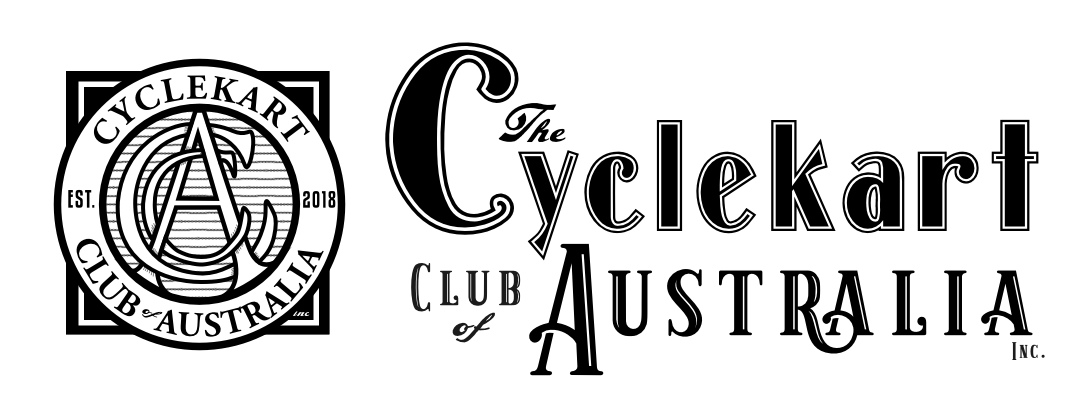..
Was discussing rear axle set ups last night at the monthly meeting and had a look through my stash of saved files and photos only to discover that I didn't have too much info at all. So thought I'd start a discussion that I could then later turn into an article for the resources section.
There seems to be two main pathways taken. 25mm (1") solid rear axles and 40mm hollow rear axles. Both are common sizes used on racing karts.
The first challenge is the length. Most racing karts use shorter axles in the 700-800mm long range. These are a bit too short for a CycleKart. Typically the wheel track is 965mm (38"). The length is further limited by the overall width limit for the Cyclekart of 1016mm (40"). So you ideally want an axle somewhere between 900mm - 1000mm long.
The actual length will depend on your hub offset, but generally to satisfy the 965mm track (distance between the centre of the wheels), Typically on the 1" axle, the axle will pass through the inner mounting hub, the wheel hub and outer hub plate and secure the entire hub assembly with a locking nut or locking collar.
The reason for the axle passing through the wheel and employing an outer hub plate is to provide support to the wheel. This can be further strengthened by the use of a bush inside the wheel.
40mm axles often do not pass through the wheel due to their size but still employ an outer hub plate to sandwich the wheel hub and provide additional strength
The following links show a few different styles of axle set up
This is mine using a 1" axle. You can also buy the same parts from Amazon.
https://cyclekarts.com.au/stream/item/268
Here's another 1" axle setup but using aluminium style hubs
https://www.facebook.com/groups/aussiecyclekarts/permalink/3421475281400108/
This is a 40mm setup again using aluminium hubs. Note the outer hub plate
https://www.facebook.com/photo?fbid=10160322249263183
Main difference between 1" and 40mm setup is that the 1" passes all the way through the wheel and provides extra support to the wheel hub, whereas AFAIK the 40mm axles are too large to pass all the way through and so only support the wheel on the inside hub flange.
People seem to use a mixture of 3 and 4 bolt flanges.
Discuss...
There seems to be two main pathways taken. 25mm (1") solid rear axles and 40mm hollow rear axles. Both are common sizes used on racing karts.
The first challenge is the length. Most racing karts use shorter axles in the 700-800mm long range. These are a bit too short for a CycleKart. Typically the wheel track is 965mm (38"). The length is further limited by the overall width limit for the Cyclekart of 1016mm (40"). So you ideally want an axle somewhere between 900mm - 1000mm long.
The actual length will depend on your hub offset, but generally to satisfy the 965mm track (distance between the centre of the wheels), Typically on the 1" axle, the axle will pass through the inner mounting hub, the wheel hub and outer hub plate and secure the entire hub assembly with a locking nut or locking collar.
The reason for the axle passing through the wheel and employing an outer hub plate is to provide support to the wheel. This can be further strengthened by the use of a bush inside the wheel.
40mm axles often do not pass through the wheel due to their size but still employ an outer hub plate to sandwich the wheel hub and provide additional strength
The following links show a few different styles of axle set up
This is mine using a 1" axle. You can also buy the same parts from Amazon.
https://cyclekarts.com.au/stream/item/268
Here's another 1" axle setup but using aluminium style hubs
https://www.facebook.com/groups/aussiecyclekarts/permalink/3421475281400108/
This is a 40mm setup again using aluminium hubs. Note the outer hub plate
https://www.facebook.com/photo?fbid=10160322249263183
Main difference between 1" and 40mm setup is that the 1" passes all the way through the wheel and provides extra support to the wheel hub, whereas AFAIK the 40mm axles are too large to pass all the way through and so only support the wheel on the inside hub flange.
People seem to use a mixture of 3 and 4 bolt flanges.
Discuss...


